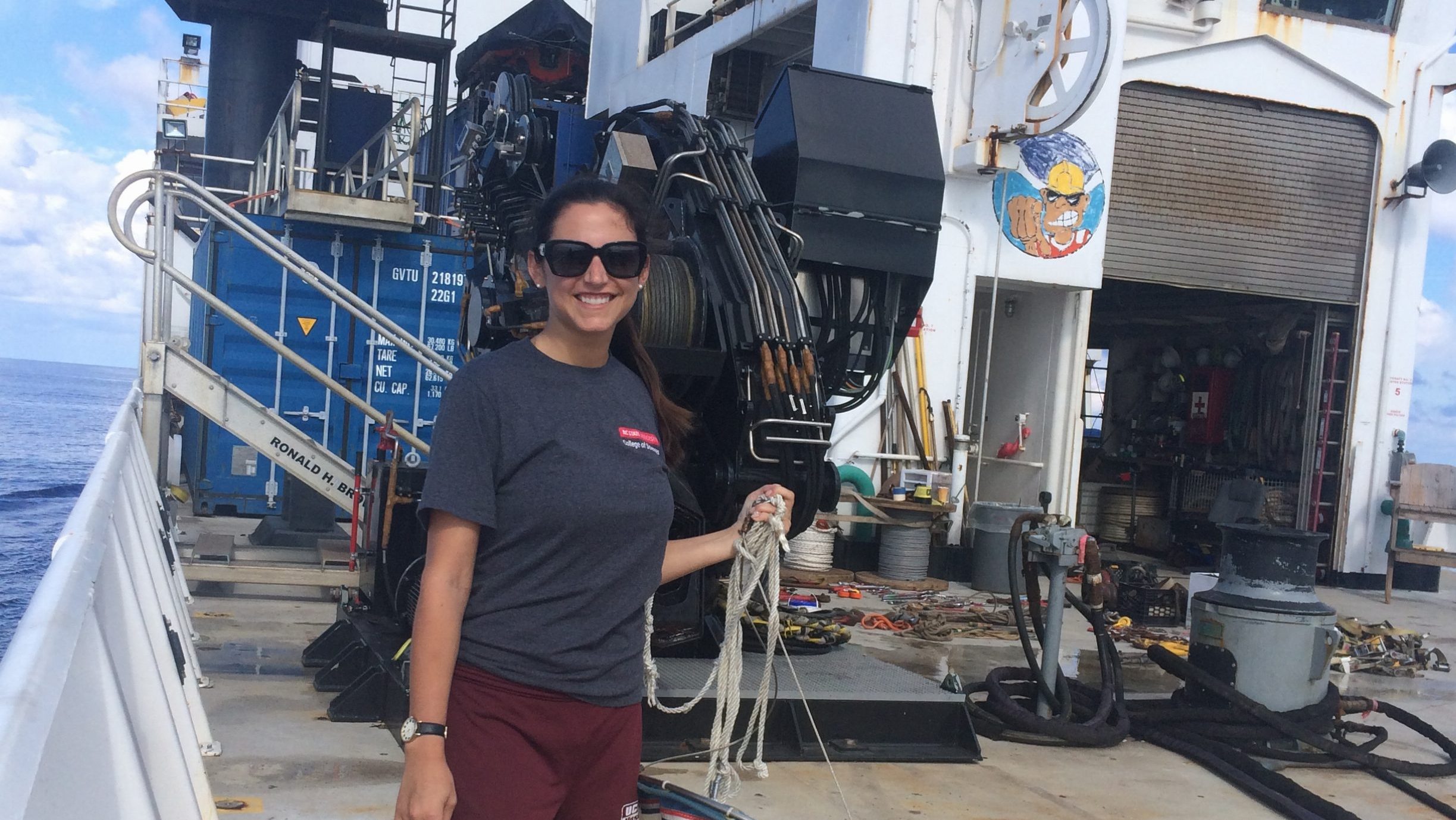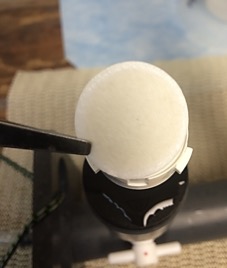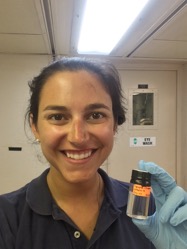Researcher Spotlight – Global Change Fellow Gabrielle Corradino: 35 Days at Sea

Summer time means time in the field for many of our Global Change Fellows. For Global Change Fellow Gabrielle Corradino, that meant 35 consecutive days on a research vessel with 23 complete strangers in the Gulf of Mexico. During her time aboard Gabrielle kept a blog detailing her experiences at sea; the following post is adapted from her most recent blog post.
Field Notes: GOMECC III Cruise
“Why would you spend 35 days on a boat just to filter seawater?”
This was the most common question (second most common was: “Don’t you get seasick?”) that I received as I explained what I would be doing during the GOMECC trip to my friends and family. The biology component of the GOMECC trip does include lots of filtering of water onto specialty glass fiber filters, but the research does not stop there!
Team Plankton (run from University of Louisiana and myself) will have filtered over 236,000ml of seawater onto 550 filters to help answer questions on microbial species diversity using both molecular and pigment profiling. While invisible to the naked eye, each of the filters will have tens of thousands of tiny organisms (phytoplankton and protozoa) retained on their surface that represent the base of the food web within the Gulf of Mexico. The filters, which may turn a greenish color, if phytoplankton are present (Fig 1), are frozen on ship and will be brought back to North Carolina State University or University of Louisiana for further analyses.

Each filter will be used to collect a snapshot look at microbial assemblages, the presence/absence of certain taxa (DNA signal) and their activities (RNA signal). In unison, we also use several preservation methods to obtain intact plankton for microscopy analyses (Fig 2) from the CTD, a bucket (Fig 3) or with a plankton net.

The GOMECC III trip spans 36 days from July 18th to August 21st, 2017 at sea with no port calls. While I have been on shorter research trips before, there is really nothing like being on a boat for 5 weeks. At first, I was incredibly nervous taking on this project. For weeks before the trip I would think about everything that could go wrong, from equipment failure and sampling incorrectly to not getting along with anyone onboard. Once I boarded the R/V Brown and as the days passed, I found my own rhythm with the ship. I figured out how to navigate the corridors, I got to know the amazing crew and got the timing down for each sampling.
It also helped that I got the best research partner to share the lab and stateroom with. From past experiences, having a dependable and intelligent partner can make the world of difference while in the field. If given the opportunity to come back as a biologist for GOMECC IV, the only thing that I would change would be to pack more snacks and double the number of t-shirts that I bring.

My participation for data collection is possible through the generous support of the Southeast Climate Science Center and National Geographic. This trip is intensive, but with the guidance from our rockstar chief scientists (Leticia Barbero and Denis Pierrot), we will be able to gain unique insight into the microbial biogeography, biodiversity and functionality. The collaborative data from GOMECC III will serve as an important baseline as we study the impact of ocean acidification on the Gulf of Mexico for many years to come.
This post is adapted from the original NOAA GOMECC post from August 8th 2017.
More about Gabrielle
Gabrielle Corradino is a 2016-17 Global Change Fellow in the Department of Marine, Earth, and Atmospheric Sciences. The aim of her research is to address marine planktonic community ecology questions using both molecular and traditional approaches. Her research is meant to address major knowledge gaps on how marine microbes, key organisms for ecosystem productivity and energy transfer to higher trophic levels (e.g., fish and shellfish), are affected by anthropogenic stressors. She is especially interested in how species abundance and trophic-level interactions shape communities of phytoplankton. This research will further our understanding of plankton food-web dynamics both spatially and temporally in light of a changing global ocean.
What’s next for Gabrielle?
Gabrielle was recently awarded the National Geographic Explorer grant, a highly competitive grant funded by the National Geographic Society. We are very excited for these next steps in her career as a research scientist.
Learn more about our Global Change Fellow program here.
- Categories:
